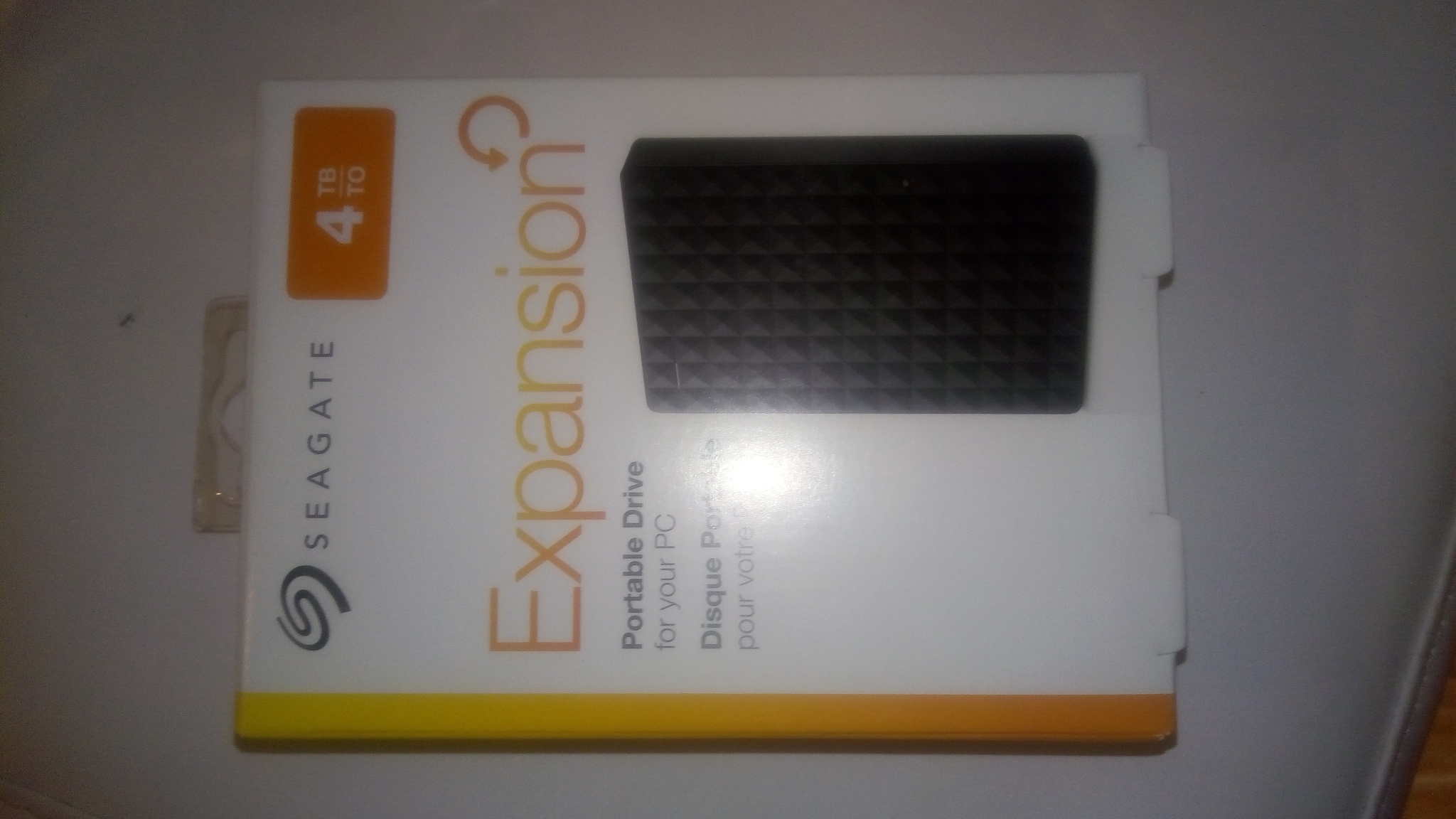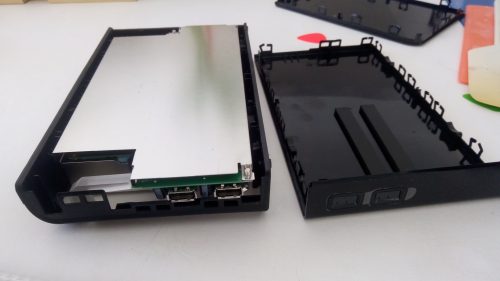

Instead, use the sharp knife right at the SATA connectors to pry the circuit board off on either side of the plastic SATA connector plug (rotate between sides – mine was kinda tight). Do not pull on the board to separate it – it will flex and possibly snap. Removing the SATA-to-USB circuit board: You can see the circuit board still attached in Picture #9. Note that there are 4 rubberish mounts (1 per screw) that you may want to hang on to if you plan to re-use the case. From there I could just slide it out by hand. I essentially tipped the drive upside down (with my hand below it to catch it), and gave it a light shake/tap – the drive pivoted out from the case shell.

Popping the drive out: Picture #8 shows the drive out. Using my method (just letting the tabs break), while there might be enough left to snap it back together somewhat, this is something of a 1-way street. So far as I can tell, the only way not to break them would be to slide a thin knife into the lip then down the side and pry, which might not work so well and is more likely to damage the drive and muck up the case around the seam anyway. Note that most of the permanent locking tabs were broken in the process (pic #5). I expanded the lid enough to get a flat-sharp chisel in and used that for the bulk of the prying. Removing case top: There’s a seam along the top lid of the case – I found it easiest to get a knife inside the seam on the connector-side of the unit. The Backup Plus can be done with fingernails – for the Expansion Portable you’ll need a knife and another tool of sorts for prying. Pictures first – click for a larger image.ĭisassembly is fairly straightforward, though less easy than on the Backup Plus. So they won’t fit in a laptop or other standard sized 2.5″ bays. At the very least it’ll be a bit harder to claim a warranty when the thing’s clearly been disassembled. Some (Western Digital especially) don’t have an SATA connector on the internal drive. Now before someone starts buying up portable external drives like a madman, I should warn you that: In our case, “de-casing” the portable hard drive so we can use the internal 2.5″ drive as a standard hard drive. Turns out it is!īefore going further, since “shucking” isn’t an overly popular term, it essentially means “de-shelling”. While my previous “Backup Plus” Seagate 4TB variant had proven shuckable in the past, I wasn’t positive if the “Expansion Portable” variant that happened to be on sale (the Seagate STEA4000400) could be shucked or not. The computer serving as a NAS was in need of another hard drive.


 0 kommentar(er)
0 kommentar(er)
